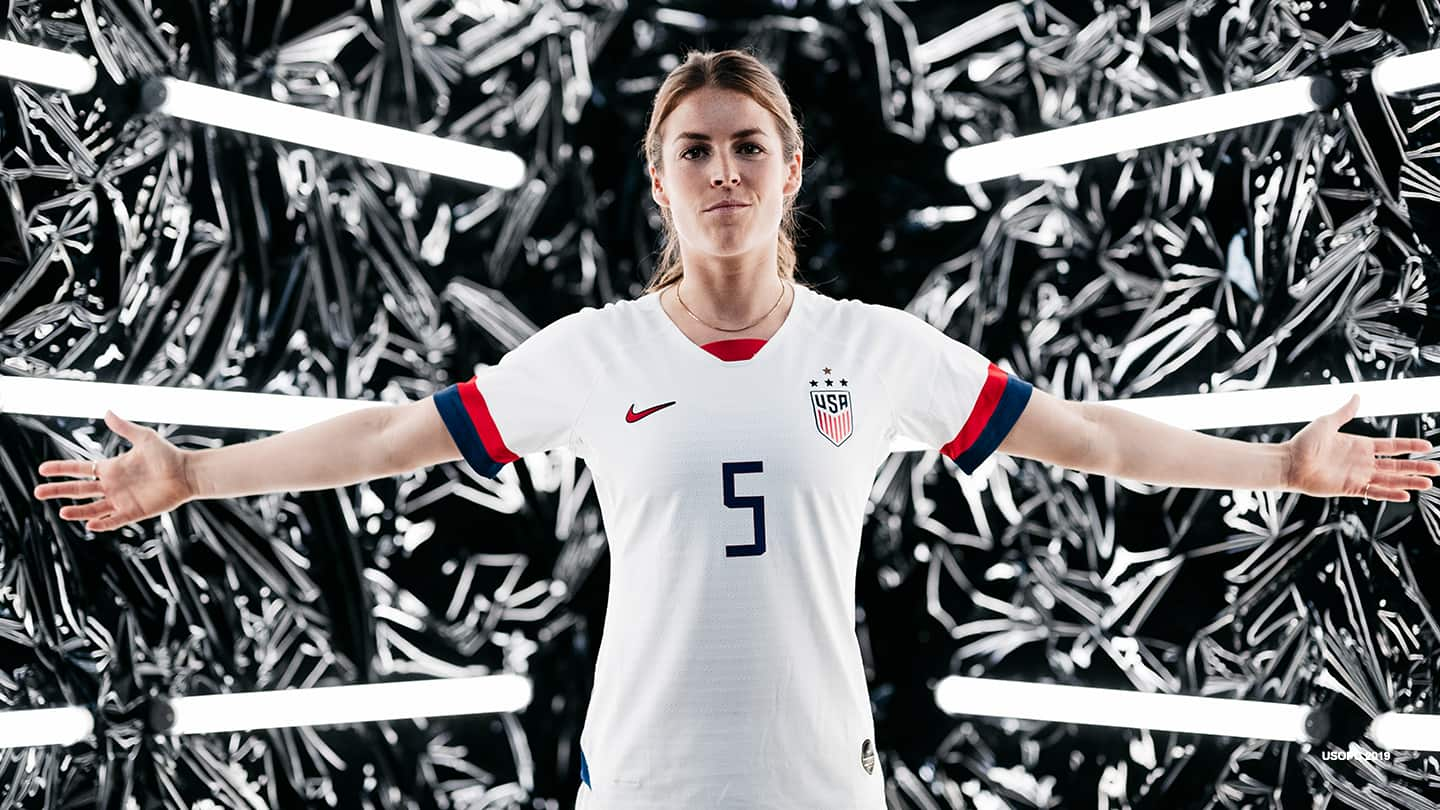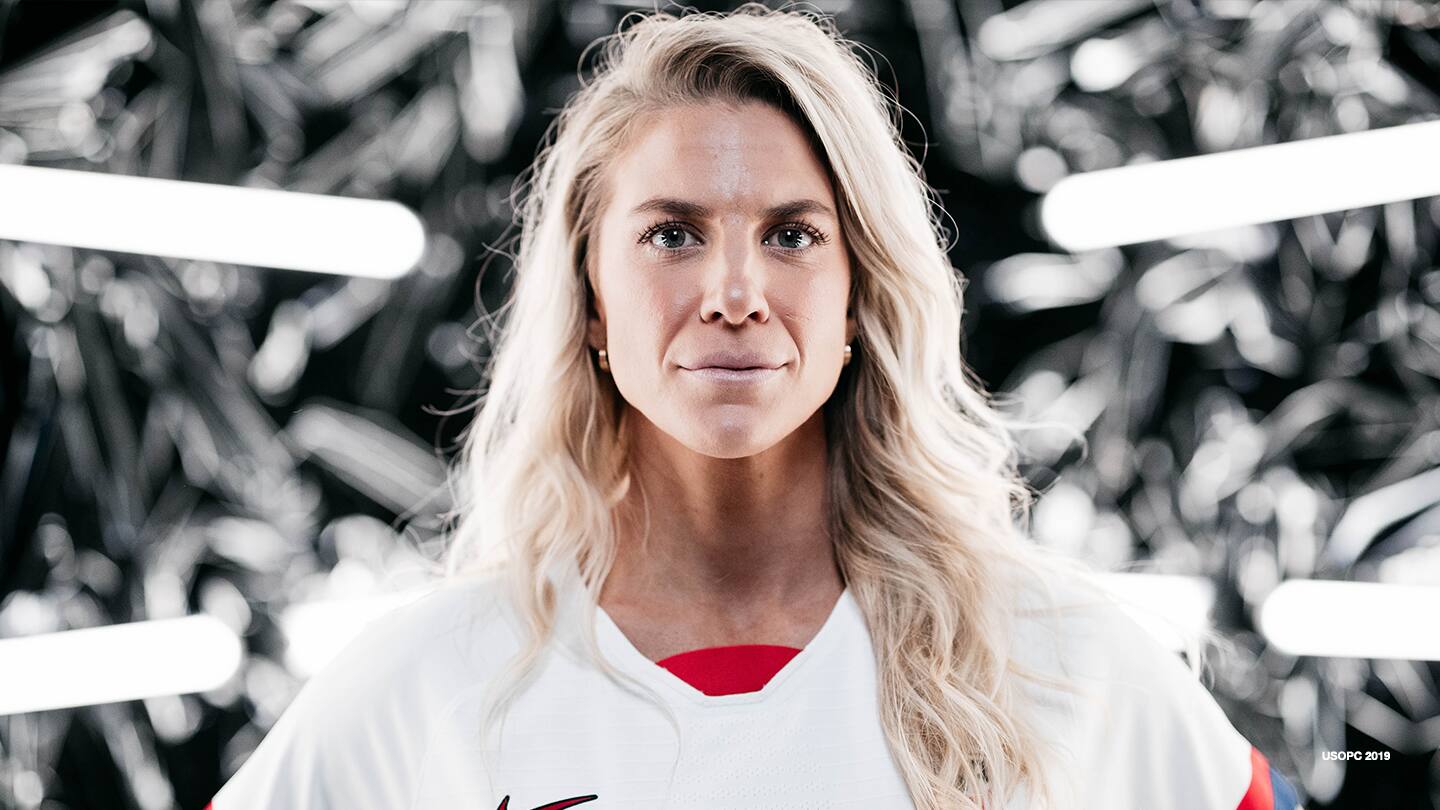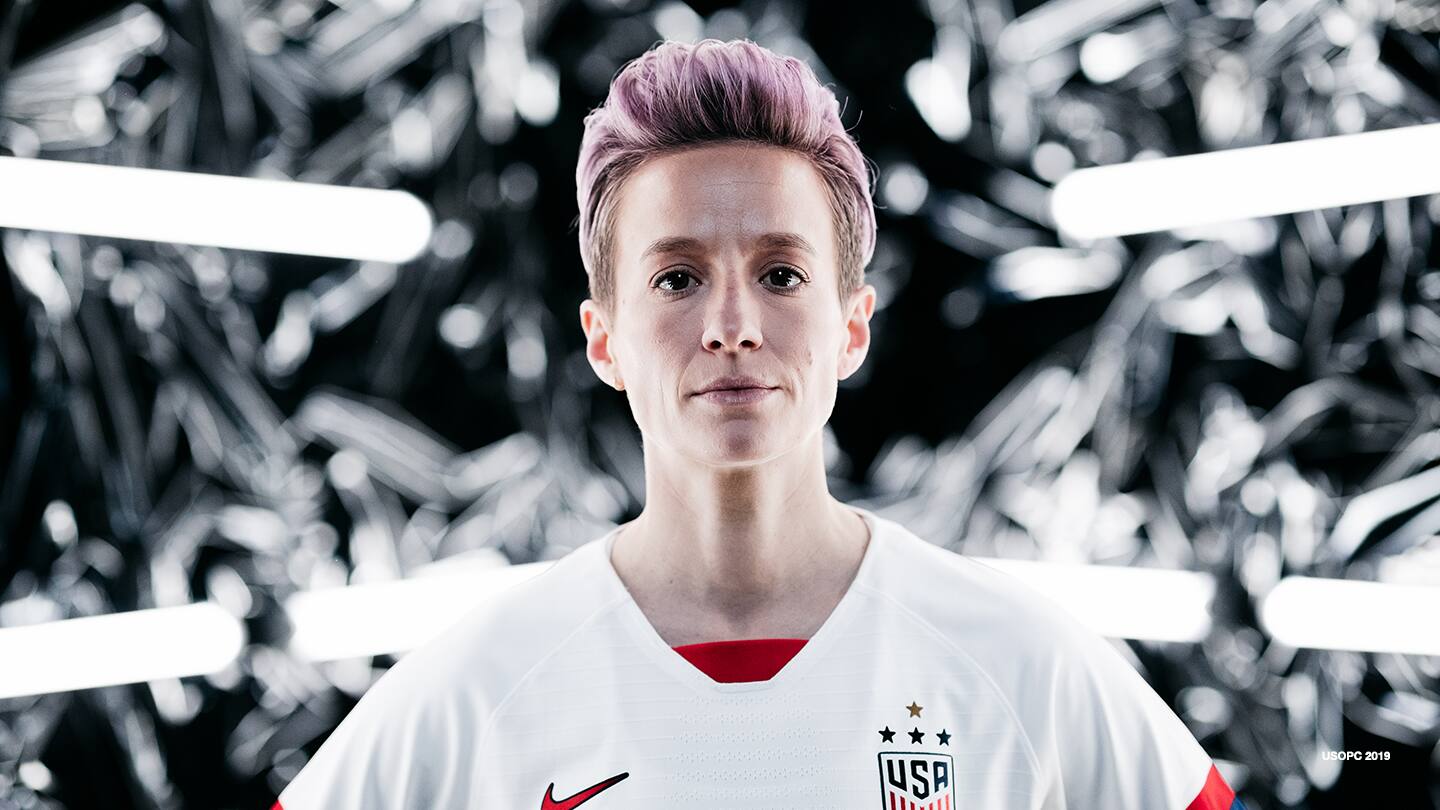
U.S. Soccer Unveils Experienced Olympic Roster To Pursue Fifth Gold Medal
by Michael Lewis
In fact, the average age of the squad is 30.8 years, the oldest national team the USA — men or women — has sent to a World Cup or the Olympic Games. Ten of the 18 players are over 30. But contained in those years are a lot of wins — 17 players were on the team that won the 2019 FIFA Women’s World Cup. This veteran side will need to weather six games in 17 days in the heat and humidity of Japan to secure an unprecedented fifth gold medal in seven Olympic women’s soccer tournaments and become the first team to win a world championship and a gold medal in the same cycle.
The Olympic team was unveiled Wednesday morning as the world finally learned which tough decisions head coach Vlatko Andonovski had to make with his selections. Two notable choices were players who haven’t been able to participate in any recent matches.
They were midfielders Julie Ertz, who had been sidelined with an MCL injury she suffered in a National Women’s Soccer League (NWSL) game against the Portland Thorns and midfielder Tobin Heath, who hasn’t played since suffering an ankle injury with Manchester United in January.
It could be considered a gamble in many quarters, although the track record for both players is quite impressive. They were vital members of the 2015 and 2019 World Cup championship sides.
If everyone is healthy, the “perfect” starting XI should look something like this in a 4-3-3 formation:
Goalkeeper — Alyssa Naeher; Defenders — Crystal Dunn, Becky Sauerbrunn, Abby Dahlkemper, Kelley O’Hara; Midfielders — Rose Lavelle, Julie Ertz, Sam Mewis; Forwards — Christen Press, Megan Rapinoe, Alex Morgan. Don’t fret, Carli Lloyd fans, she likely will get plenty of playing time. After all, she has a history of making an impact at the highest stage.
Of course, players’ form and fitness, opponents and tactics could change the starting XI from game to game.
Here is a quick look at the four platoons:

Kelley O'Hara poses at the Team USA Tokyo 2020 Olympic shoot on November 23, 2019 in West Hollywood, California.
Goalkeepers #
Alyssa Naeher is one of the top goalkeepers in the world. She left no doubt with an excellent performance at the 2019 World Cup, putting an exclamation point on it with that vital penalty kick save against England in the semifinal victory. She is expected to start every USA match.
Her backup, Adrianna Franch, has little international experience (five appearances), but has been a solid keeper for Portland Thorns FC in the National Women’s Soccer League.

Crystal Dunn poses at the Team USA 2020 Olympic shoot on November 23, 2019 in West Hollywood, California.
Defenders #
This is a solid and athletic back four as the four starters average 126 games of international experience among them.
Both outside backs — Crystal Dunn (left) and Kelley O’Hara (right) have strong backgrounds as attacking players. For the USWNT, Dunn plays out of her natural position(s) as a midfielder/forward with Portland Thorns FC. But she established herself as a world class defender during the 2019 World Cup. O’Hara has become dependable on the right flank with her speed and grit.
The center back tandem of Becky Sauerbrunn and Abby Dahlkemper isn’t afraid to be physical. Moreover, the 36-year-old Sauerbrunn brings experience to the back line and leadership to the team as captain.
In reserve are Tierna Davidson, the youngest player on the squad at 22, and Emily Sonnett, who have been outstanding for their respective NWSL teams, the Chicago Red Stars and Washington Spirit.

Julie Ertz poses at the Team USA Tokyo 2020 Olympic shoot on November 23, 2019 in West Hollywood, California.
Midfielders #
Many tournaments are decided by the midfield and the USA boasts experience and skill there as well.
An imposing force on both sides of the ball, Sam Mewis has established herself as one of the top players in the world. She is difficult to stop in set piece situations, particularly as an expert header. She also can excel as a ball winner. Joining Sam on the team is her older sister, Kristie, who impressed during the Summer Series. She’ll have to push for playing time but could be a spark plug off the bench.
Ertz, who hasn’t played in a game in more than a month, is a superior ball winner at midfield. The U.S. has missed her defensive presence, but she is expected to be fully healthy in time for the Games. She will get a chance to return to form during the Send-Off Series.
Rose Lavelle, the Bronze Ball winner at the 2019 World Cup, is a star who can make an impact when the opposition least expects it with a pass or a timely goal.
Lindsey Horan, who has 96 caps, could be the odd woman out in a three-player midfield, but she is versatile enough to take on several roles. She still could see plenty of playing time due to the compressed schedule that gives teams just two off days between matches. Depending on the opponent, tactics needed and proper player rest, Andonovski has several quality options.

Megan Rapinoe poses at the Team USA Tokyo 2020 Olympic shoot on November 23, 2019 in West Hollywood, California.
Forwards #
While the average age of the team is 30.8, the forward foursome is the most experienced unit at an average of 34.4 years a player. Christen Press is the “baby” of the bunch at 32.
Press tallied an important goal in the semifinal victory over England in France two years ago and has become a vital performer with her passing and finishing as she demonstrated during the recent Summer Series. Press has found the net 61 times in 147 international matches.
The Big Three of Megan Rapinoe, Alex Morgan and Carli Lloyd combined for just two goals in the three-match Summer Series, but they have a history of coming up big time when it counted.
Some of those big moments in chronological order:
• Morgan, who turns 32 on July 2, tallied the game-winning goal in the final seconds of extra time in the epic semifinal encounter against Canada at the 2012 Olympic Games. She has struck for 110 goals in 178 international appearances.
• Carli Lloyd, who turns 39 on July 16, recorded that historic 16-minute hat-trick in the 2015 World Cup championship triumph. She also is the only player to score winning goals for the gold-medal winners — men or women — in consecutive Olympic finals (2008, 2012). Lloyd has tallied 125 goals, the most of all active USWNT players, in 304 matches.
• Rapinoe, who turns 36 on July 5, performed her heroics during the 2019 World Cup in France, earning Golden Ball and Golden Boot honors. She has found the net 59 times in 177 international contests.
Heath, 33, hasn’t played in months and likely will contribute come off the bench. Heath doesn’t have the same history as her fellow front-line players — she has scored 33 goals in 169 games — but she has the speed, grit and determination to make life difficult for opposing defenders to help teammates fill the net.
Horan represents yet another option for Andonovski’s challenge to keep everyone fresh, particularly with four 30+ forwards. However, it should be noted that several women’s players have excelled in attacking roles at the international level.
Former Brazilian international midfielder Formiga participated in her record seventh World Cup in 2019 at the age of 41 years, 112 days as the oldest player. She also is the oldest goal-scorer at a World Cup, having found the net in a goal against South Korea when she was 37 years, three months and six days old on June 9, 2015.
Alternates #
The four alternates chosen were goalkeeper Jane Campbell (Houston Dash), defender Casey Krueger (Chicago Red Stars), midfielder Catarina Macario (Lyon, France) and forward Lynn Williams (North Carolina Courage). The quartet have enjoyed outstanding NWSL careers but have never been on a world championship roster at the highest level.
They will travel to Japan and train with the team.
In contrast to the World Cup, when the roster is frozen once the first match is played, Olympic teams can make a roster change because of injury at any time leading up to and during the tournament. There will be five substitutions allowed per team during games, plus the possibility of one concussion substitution per new regulations.
While a gold medal remains the expectation and goal, the Americans need to reach the medal round first and avoid knockout-round disasters such as the stunning elimination by Sweden at the 2016 Games. Ironically, the Swedes will be first up for the USWNT in Saitama on July 21.
Team USA will look to get off to a fast start and reclaim their gold-medal status.
Michael Lewis #
Michael Lewis, who covers soccer for Newsday, has written about the sport for four decades and has written six books about soccer. He is a freelance contributor to TeamUSA.org on behalf of Red Line Editorial, Inc.
Read More#
Expect The USWNT And Canada To Go All Out With An Olympic Berth On The Line
2021 Was A Year Of Ups, Downs And Changes For The USWNT, All Setting Up A Big 2022
USWNT Take Down Netherlands In Penalty Shootout To Advance To Olympic Semifinals
Tough Olympic Roster Decisions Loom For U.S. Soccer Coach Vlatko Andonovski